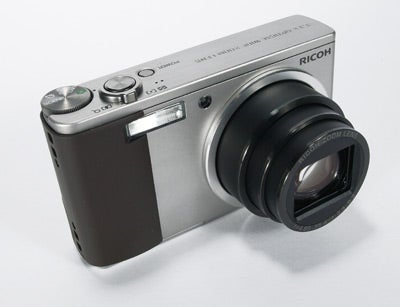Ricoh Caplio's R series undergoes complete redesign
Ricoh Caplio R8 Review
Ricoh certainly can’t be accused of hanging around. September 2007 saw the arrival of the new R7, the successor to the R6 that had itself only been released six months previously. Clearly following the six-month rota of the ‘R’ series, May 2008’s R8 is not only the latest in the line, but has also seen a complete cosmetic overhaul compared to its predecessors.
Where the R6 and R7 had previously laid claim to being the slimmest-bodied compacts in their category, the R8 has ditched the diet and, as a result, is 6mm thicker and generally bulkier for it.
Apart from the redesigned body, the R8 has improved upon the R7 where needed, yet maintained features previously praised. The sensor has been replaced; the old 8MP making way for a 1/2.3in CCD producing an effective 10MP, yet the earlier model’s Smooth Imaging Engine III image-processing engine is kept.
LCD screen size is kept at a generous 2.7in, yet the resolution has been doubled from a previous 230,000 pixels up to a striking 460,000 pixels. Another feature to be kept is the impressive 7x (7.1x to be precise) optical zoom, delivering a focal range of 28-200mm in 35mm equivalent thanks to Ricoh’s original double-retracting lens system.
While the completely reworked body of the R8 has unquestionably made it an altogether bulkier proposition, it can be argued that usability and handling has improved as a result. Where the R7 tapered off towards the handgrip, the R8 is fitted with a comfortable rubber grip. The thin top cover of the R7 has been replaced by a brushed steel plate offering a feeling of real durability, and is home to an enlarged zoom lever, raised shutter release button and protruding mode dial offering easier operation.
In use, the R8 benefits from the expanded functionality of the ‘ADJ’ button. It’s now possible to assign up to five camera functions in a ‘favourite’ style to allow quick access to commonly used functions, thus speeding up operation. The menu system is well thought out, easily navigable, and the black and yellow colour scheme pleasing to the eye.
Image Quality
At first glance, the overall look of the images is clean and crisp. Fringing is generally very well controlled, thanks to the high quality optics, though it does crop up in areas of very high contrast. But on close inspection the processing is less impressive. As you progress through the ISO range, aggressive noise reduction and oversharpening manifest themselves in mottled textures and grainy detail. In difficult light and areas of high-contrast, (eg black objects on white backgrounds) the sharpening can make objects almost look ‘cut-out’. The Smooth Imaging Engine III delivers an impressive dynamic range however, with tones maintained in highlights and shadows.
Verdict
Every six months a new R series compact seems to appear, often delivering few improvements on its predecessor. But Ricoh has gone a step further with the R8 in completely redesigning the body, and while the extra bulk may be off-putting at first, the handling benefits of the new physique soon become apparent. The newly developed 460k pixel LCD HVGA screen and the operational design tweaks make the R8 a pleasure to use. Prints up to 7x5in taken in favourable conditions look pleasing at normal viewing distances. In difficult light the images don't always stand up to close inspection, when over-sharpening and aggressive noise reduction become evident.





